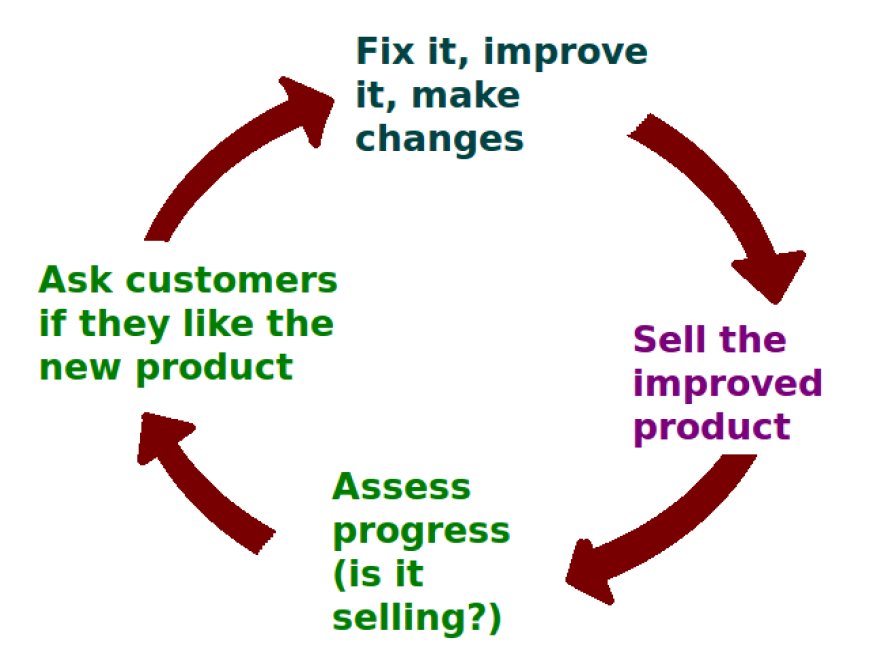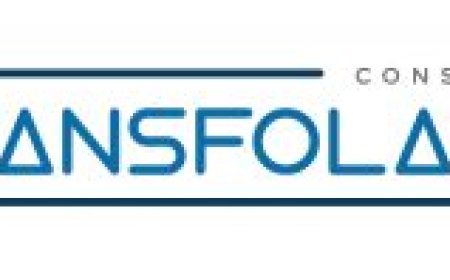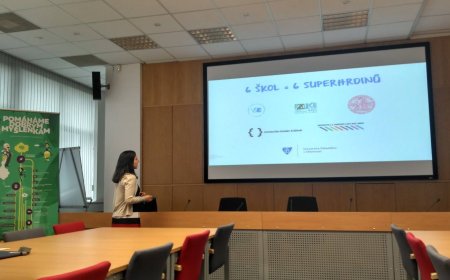The Ultimate Guide to Mastering Customer Feedback Loops
The Ultimate Guide to Mastering Customer Feedback Loops In today's highly competitive business landscape, understanding and responding to customer ...

The Ultimate Guide to Mastering Customer Feedback Loops
In today's highly competitive business landscape, understanding and responding to customer feedback has become a critical component of success. Customer feedback loops are the backbone of any effective customer-centric strategy, providing invaluable insights that can drive product and service improvements, enhance customer satisfaction, and ultimately, boost business growth.
In this comprehensive guide, we'll delve into the world of customer feedback loops, exploring their importance, the different types, and the strategies and best practices for implementing them effectively. Whether you're a small business owner, a marketing professional, or a customer experience expert, this guide will equip you with the knowledge and tools to harness the power of customer feedback and take your business to new heights.
Understanding Customer Feedback Loops
A customer feedback loop is a continuous process of gathering, analyzing, and acting upon customer feedback to improve products, services, and the overall customer experience. It's a cyclical process that involves the following key steps:
1. Collecting Feedback: The first step in the customer feedback loop is to gather feedback from customers through various channels, such as surveys, online reviews, social media, and direct customer interactions.
2. Analyzing Feedback: Once the feedback has been collected, it's crucial to analyze the data to identify patterns, trends, and areas for improvement. This may involve using data analysis tools, sentiment analysis, and other techniques to gain a deeper understanding of the customer's perspective.
3. Implementing Changes: Based on the insights gained from the analysis, the organization can then implement changes and improvements to address the customer's needs and pain points.
4. Monitoring and Evaluating: The final step in the feedback loop is to monitor the impact of the implemented changes and evaluate their effectiveness. This may involve tracking key performance indicators (KPIs), such as customer satisfaction, retention, and loyalty.
The continuous nature of the customer feedback loop ensures that organizations can constantly adapt and improve their offerings to meet the evolving needs of their customers.
The Importance of Customer Feedback Loops
Customer feedback loops are essential for businesses of all sizes and across various industries. Here's why they are so important:
1. Improving Customer Experience: By actively listening to and responding to customer feedback, businesses can identify and address pain points, enhance product and service quality, and ultimately, improve the overall customer experience.
2. Driving Product Innovation: Customer feedback can provide valuable insights into the features, functionalities, and improvements that customers desire, enabling businesses to develop and refine their products and services to better meet their needs.
3. Increasing Customer Loyalty and Retention: When customers feel heard and their feedback is acted upon, they are more likely to become loyal advocates of the brand, leading to increased customer retention and lifetime value.
4. Optimizing Marketing and Sales Strategies: Customer feedback can inform marketing and sales strategies, helping businesses to better target their messaging, tailor their offerings, and improve their overall go-to-market approach.
5. Enhancing Operational Efficiency: By addressing customer pain points and improving processes based on feedback, businesses can streamline their operations, reduce costs, and increase overall efficiency.
6. Gaining a Competitive Advantage: Businesses that effectively implement customer feedback loops can gain a significant competitive advantage by continuously adapting and improving their offerings to meet the evolving needs of their customers.
Types of Customer Feedback Loops
There are several types of customer feedback loops, each with its own unique characteristics and applications. Understanding the different types can help businesses choose the most appropriate approach for their specific needs.
1. Closed-Loop Feedback: This type of feedback loop involves directly addressing and resolving individual customer issues or concerns. It typically involves a customer service representative or account manager following up with the customer to understand the problem, provide a solution, and ensure their satisfaction.
2. Open-Loop Feedback: Open-loop feedback refers to the collection and analysis of customer feedback, without a direct follow-up or resolution process. This type of feedback is often gathered through surveys, online reviews, or social media interactions, and is used to identify broader trends and areas for improvement.
3. Real-Time Feedback: Real-time feedback loops involve collecting and responding to customer feedback in the moment, often during or immediately after a customer interaction. This can be achieved through in-app surveys, live chat, or other real-time communication channels.
4. Longitudinal Feedback: Longitudinal feedback loops focus on tracking customer sentiment and experience over an extended period, often across multiple touchpoints and interactions. This type of feedback can provide valuable insights into the long-term impact of changes and improvements made based on customer input.
5. Proactive Feedback: Proactive feedback loops involve actively seeking out customer input, rather than waiting for customers to provide it voluntarily. This can be done through targeted surveys, focus groups, or other outreach initiatives, and can help businesses stay ahead of emerging trends and customer needs.
Businesses may choose to implement a combination of these feedback loop types to gain a comprehensive understanding of their customers' experiences and preferences.
Implementing Effective Customer Feedback Loops
Implementing effective customer feedback loops requires a strategic and well-executed approach. Here are the key steps to follow:
1. Define Your Feedback Objectives: Start by clearly defining the objectives and goals you want to achieve through your customer feedback loop. This will help you determine the appropriate feedback channels, metrics, and strategies to implement.
2. Identify Feedback Channels: Choose the channels through which you will collect customer feedback, such as surveys, online reviews, social media, customer support interactions, and more. Consider the preferences and habits of your target audience to ensure maximum participation and engagement.
3. Design Effective Feedback Mechanisms: Carefully design your feedback mechanisms to ensure they are user-friendly, intuitive, and encourage customers to provide meaningful and actionable insights. This may involve creating well-structured survey questions, providing clear instructions, and offering incentives for participation.
4. Analyze and Interpret Feedback: Implement robust data analysis and interpretation processes to extract valuable insights from the collected feedback. This may involve using sentiment analysis, natural language processing, and other advanced techniques to identify patterns, trends, and areas for improvement.
5. Prioritize and Implement Changes: Based on the insights gained from the feedback analysis, prioritize the areas that require the most immediate attention and implement the necessary changes and improvements. Ensure that these changes are communicated to customers and that their impact is measured and evaluated.
6. Close the Loop: Close the feedback loop by communicating with customers about the changes and improvements made based on their input. This can help build trust, strengthen customer relationships, and demonstrate your commitment to addressing their needs.
7. Continuously Monitor and Improve: Continuously monitor the impact of the implemented changes and use the feedback loop to make ongoing refinements and improvements to your products, services, and customer experience.
Best Practices for Effective Customer Feedback Loops
To ensure the success of your customer feedback loops, consider the following best practices:
1. Ensure Accessibility and Convenience: Make it easy for customers to provide feedback by offering a variety of feedback channels and ensuring that the process is simple and straightforward.
2. Maintain Transparency and Responsiveness: Be transparent about how customer feedback is being used and demonstrate responsiveness by communicating the actions taken in response to customer input.
3. Personalize the Feedback Experience: Tailor the feedback process to the individual customer's preferences and needs, and provide personalized responses and solutions where possible.
4. Leverage Customer Segmentation: Segment your customer base and tailor your feedback loops to address the unique needs and pain points of each customer segment.
5. Integrate Feedback into Decision-Making: Ensure that customer feedback is deeply integrated into your organization's decision-making processes, from product development to marketing and operations.
6. Continuously Refine and Optimize: Regularly review and refine your customer feedback loops, incorporating new technologies, channels, and best practices to ensure their ongoing effectiveness.
7. Celebrate and Recognize Customer Contributions: Acknowledge and celebrate the contributions of your customers, demonstrating your appreciation for their valuable feedback and input.
Case Studies and Examples
To illustrate the power of customer feedback loops, let's explore a few real-world examples:
Case Study: Airbnb's Feedback-Driven Improvements
Airbnb, the popular vacation rental platform, has built a robust customer feedback loop that has been instrumental in driving its growth and success. The company actively collects feedback from both guests and hosts through various channels, including post-stay surveys, in-app feedback, and social media interactions.
Airbnb's data analysis team closely examines this feedback to identify pain points, emerging trends, and areas for improvement. For example, based on guest feedback, Airbnb implemented a more transparent and user-friendly review system, which has helped build trust and confidence among its users.
Additionally, the company has used host feedback to enhance its support resources, streamline its onboarding process, and introduce new features that make it easier for hosts to manage their properties. By continuously iterating and improving based on customer feedback, Airbnb has been able to maintain its position as a market leader in the vacation rental industry.
Example: Zappos' Commitment to Customer Feedback
Zappos, the online shoe and clothing retailer, is renowned for its exceptional customer service and its commitment to customer feedback. The company actively encourages customers to provide feedback through various channels, including post-purchase surveys, social media, and direct customer interactions.
Zappos' customer service representatives are empowered to make real-time decisions based on customer feedback, often going above and beyond to resolve issues and ensure customer satisfaction. The company also uses customer feedback to inform its product selection, website design, and overall business strategy.
By prioritizing customer feedback and using it to drive continuous improvements, Zappos has built a loyal customer base and a reputation for delivering an exceptional customer experience.
Case Study: Lego's Crowdsourcing Platform
Lego, the iconic toy company, has embraced customer feedback in a unique way through its Lego Ideas platform. This crowdsourcing platform allows Lego fans to submit their own product ideas, which are then voted on by the community.
The ideas that receive the most votes are evaluated by Lego's product development team, and the selected concepts are then turned into real Lego sets. This feedback loop not only taps into the creativity and enthusiasm of Lego's customer base but also ensures that the company is developing products that align with the preferences and interests of its target audience.
By incorporating customer feedback into its product development process, Lego has been able to maintain its relevance, foster a strong sense of community, and continuously introduce new and innovative Lego sets that resonate with its loyal fan base.
Overcoming Challenges in Implementing Customer Feedback Loops
While customer feedback loops offer numerous benefits, there can be challenges in implementing them effectively. Here are some common challenges and strategies to overcome them:
1. Low Customer Participation: If customers are not actively providing feedback, it can be difficult to gather the necessary insights. To address this, consider offering incentives, making the feedback process more user-friendly, and proactively reaching out to customers through various channels.
2. Analyzing and Interpreting Feedback: Sifting through large volumes of customer feedback and extracting meaningful insights can be a daunting task. Leverage data analysis tools, sentiment analysis, and other techniques to streamline the feedback analysis process.
3. Prioritizing and Implementing Changes: With limited resources, it can be challenging to determine which customer feedback to prioritize and how to effectively implement the necessary changes. Establish clear criteria for prioritization and involve cross-functional teams to ensure efficient implementation.
4. Communicating Feedback and Changes: Keeping customers informed about the changes made based on their feedback is crucial, but it can be time-consuming and require dedicated resources. Automate communication processes and leverage various channels to ensure transparency and responsiveness.
5. Maintaining Continuous Improvement: Sustaining a customer feedback loop as an ongoing process can be challenging, especially as the business and customer needs evolve. Regularly review and refine your feedback loop strategies to ensure they remain effective and aligned with your organizational goals.
6. Overcoming Organizational Resistance: Some employees or departments may be resistant to implementing changes based on customer feedback, especially if it requires a shift in their established processes or priorities. Foster a customer-centric culture, provide training, and engage cross-functional teams to overcome this resistance.
By proactively addressing these challenges and continuously refining your customer feedback loop strategies, you can ensure that your organization reaps the full benefits of this powerful customer-centric approach.
The Future of Customer Feedback Loops
As technology continues to evolve, the future of customer feedback loops is poised to become even more powerful and sophisticated. Here are some emerging trends and developments that are shaping the future of customer feedback:
1. Increased Automation and AI-Driven Insights: Advancements in artificial intelligence and machine learning will enable businesses to automate the collection, analysis, and interpretation of customer feedback, leading to more efficient and data-driven decision-making.
2. Real-Time Feedback and Closed-Loop Responsiveness: With the rise of real-time communication channels, businesses will be able to gather and respond to customer feedback in the moment, further enhancing the customer experience and demonstrating their responsiveness.
3. Personalized and Contextual Feedback Experiences: Businesses will leverage customer data and advanced analytics to deliver highly personalized and contextual feedback experiences, tailored to the individual's preferences and needs.
4. Integrated Feedback Across the Customer Journey: Customer feedback loops will become more comprehensive, spanning multiple touchpoints and channels throughout the customer journey, providing a holistic view of the customer experience.
5. Predictive Insights and Proactive Improvements: By combining customer feedback with other data sources, businesses will be able to generate predictive insights and proactively make improvements to stay ahead of evolving customer needs and market trends.
6. Collaborative Feedback and Co-Creation: Customers will play an increasingly active role in the product and service development process, with businesses fostering collaborative feedback loops and co-creation opportunities.
As businesses continue to prioritize customer-centricity and the power of feedback, the future of customer feedback loops will become even more integral to driving innovation, enhancing customer loyalty, and ultimately, achieving long-term business success.
Conclusion
Customer feedback loops are a crucial component of any successful customer-centric strategy. By actively collecting, analyzing, and responding to customer feedback, businesses can unlock a wealth of insights that can drive product and service improvements, enhance the customer experience, and ultimately, fuel business growth.
In this comprehensive guide, we've explored the fundamentals of customer feedback loops, their importance, the different types, and the strategies and best practices for implementing them effectively. We've also delved into real-world case studies and examples, showcasing how leading businesses have leveraged customer feedback to achieve remarkable results.
As the business landscape continues to evolve, the future of customer feedback loops promises to become even more powerful and sophisticated, with advancements in technology and data-driven insights. By embracing the power of customer feedback and continuously refining your strategies, you can position your business for long-term success and stay ahead of the competition.
Remember, the key to mastering customer feedback loops is to make it a continuous and integrated part of your business operations. By fostering a customer-centric culture, leveraging the right tools and technologies, and continuously iterating and improving, you can unlock the full potential of customer feedback and propel your business to new heights.
KEYWORDS: customer feedback loops, customer experience, customer-centric strategy, customer feedback, customer satisfaction, customer loyalty, product innovation, marketing strategy, operational efficiency, competitive advantage
What's Your Reaction?
 Like
0
Like
0
 Dislike
0
Dislike
0
 Love
0
Love
0
 Funny
0
Funny
0
 Angry
0
Angry
0
 Sad
0
Sad
0
 Wow
0
Wow
0































































